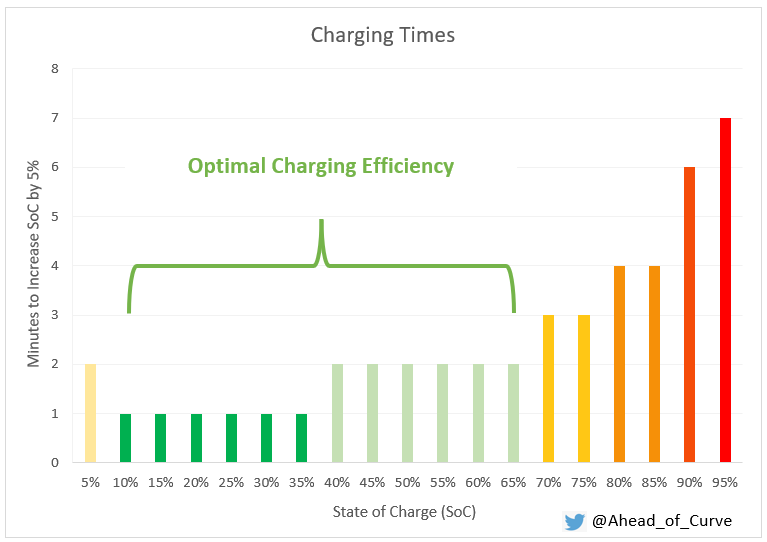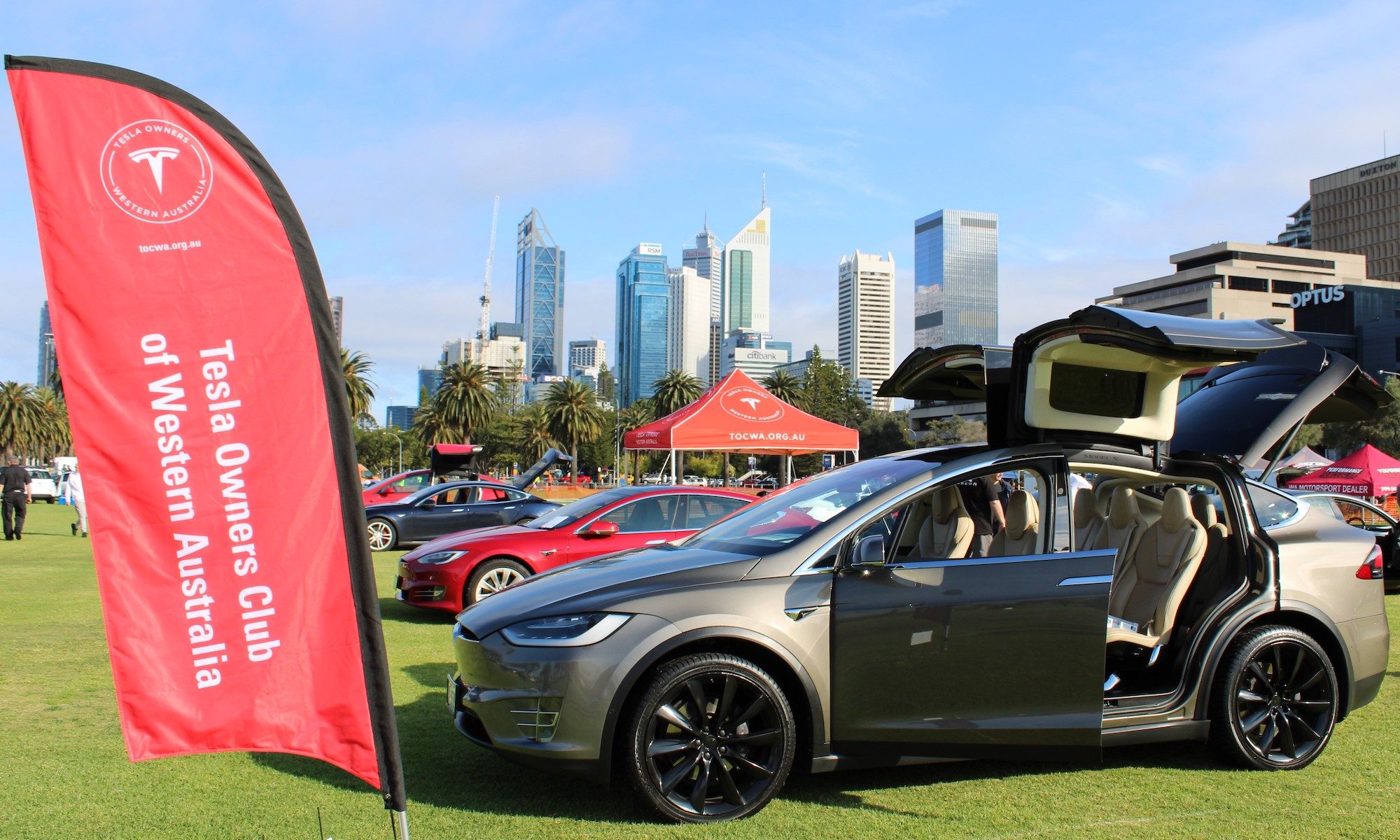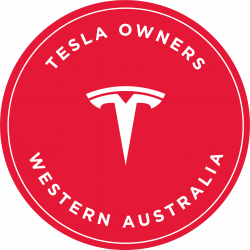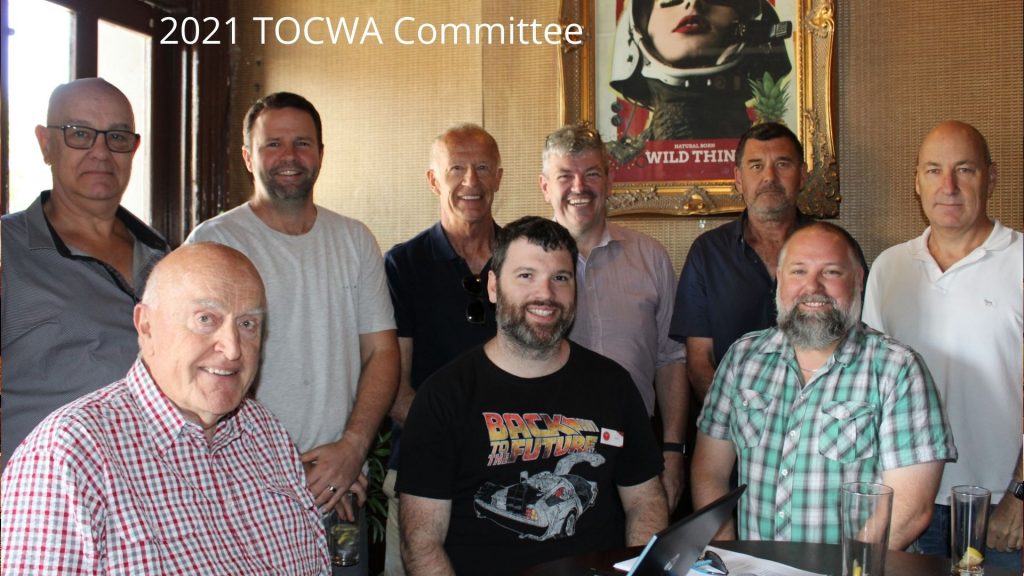(Essential reading for new owners and a handy review for existing Tesla drivers.) Written by Pete Petrovsky
If this is your first EV or first Tesla, congratulations on taking the first step towards helping to accelerate the world’s transition to sustainable energy with a car that is completely changing the entire automotive industry for the better. You’ll be glad to know you’ve ordered the world’s safest car, which is an absolute pleasure to own and drive and you can wave Goodbye to petrol station visits and most servicing.
Did you know Tesla doesn’t have a mandated service schedule? That said, there are a couple of recommendations. How much will servicing your Tesla set you back? In Australia, the Tesla recommended servicing and maintenance will cost $111 in the first three years compared to $1,725 or about 15 times as much for an average Australian internal combustion engine vehicle over the same 3-year period. But that’s just where the savings begin. Did you know that even if petrol was free, you would still be better off with a Tesla? To find out how far ahead you can expect to be after three years see: https://www.tocwa.org.au/2021/11/26/tesla-model-3-economics-compared-to-an-average-australian-petrol-car/
With all that enjoyable, safe and low-cost motoring to look forward to, you’re no doubt eager to hit the road, but perhaps you’re wondering whether you know everything you should before jumping behind the wheel of your shiny new Tesla. While I aimed to be comprehensive, the following should not be considered an exhaustive list of everything there is to know about owning an EV, but hopefully it should make for a good and informative start.
Paying For Your New Tesla
There have been a couple of instances in Australia where reservation holders had their email accounts hacked and consequently, while under the impression they were transferring their funds to Tesla, instead, they were unknowingly making the transfer to a scammer. I believe Tesla has now put in place various measures such as using your car’s VIN number as the account number but a good tip is to first transfer a negligibly small amount and check with Tesla that they received your funds and then use the exact same account details to transfer the balance. This is the method I used for our first Tesla in September 2019 and it worked well, however, with there now being a considerable backlog, you’ll need to allow enough time to ensure you are ready to take delivery as soon as your car is ready, otherwise you may run the risk of being pushed back in the queue as your car may be reassigned to the next reservation holder for that model car and trim. Please note, if you’re financing your Tesla and your bank or other loan provider is making the transfer for you this may not be an issue, but if you are going to be transferring the balance owing on your car yourself it pays to be cautious as you may not get a second chance.
Insurance
You’ll want to ensure you take out comprehensive car insurance before driving your new Tesla for the first time. There are numerous variables that go into determining insurance premiums including the insured value, the excess, where and how the car is parked, your driving history, your demographics, the age of the youngest driver, your no claims bonus, personal versus business use, how much you expect to drive the car as well as optional extras such as a hire car and so on. It’s important you take these and any other relevant factors into account when arranging your car insurance. In terms of who are the most Tesla and EV friendly insurers in Australia, TOCWA members report the lowest premiums from RACWA and Budget Direct ranging between approximately $900 a year or lower to about $2,000 a year or more for a Model 3, but please do shop around as far and wide as you feel appropriate and please let us know if you happen to find better like-for-like rates with another insurer. [2023 Update: Model Y premiums seem to be fairly similar the Model 3 amounts quoted above.] [2024 update: Koba Insurance says they specialise in smart EV insurance including pay-per-KM insurance where you can grant them remote access to your car. We haven’t had enough experience or feedback from our members to form an opinion on this product as yet but I’ll update this article once we do.]
Vehicle Delivery
Before picking up your car I recommend that you download the Tesla app here: https://www.tesla.com/en_AU/support/tesla-app and set up an account. Tesla may have already let you know that the delivery experience will be fairly fast, possibly as short as 5-15 minutes. You may therefore want to consider reaching out to an experienced Tesla owner to run you through the controls and settings before you drive off for the first time. Alternatively, please see this video about how to best set up your new Tesla. I generally recommend setting the car up with the following options turned on:
- ◦ Lights – Auto
- ◦ Auto High Beams – [2024 update: In May 2024, Tesla updated our cars with Adaptive High Beams via a free over-the-air update. In my experience, the adaptive high beams seem like a great safety feature and hence I’d recommend enabling them on all cars with Matrix (Global rather than SAE/ECE) Headlights. All Australian Model Y vehicles and most if not all Shanghai-built Model 3 cars after about Q4 of 2021 have matrix headlights and I believe if Tesla needs to replace headlights on older models they replace them with the new matrix headlamps.]
- ◦ Windscreen wipers – Off or Auto [2023 Update: The algorithm has improved so now it’s more of a personal choice.]
- ◦ Regenerative Braking – Standard
- ◦ Stopping Mode – Hold (This is the single pedal driving feature. It can take a few hours of city driving before it becomes automatic or instinctive but once you get used to it you will most likely won’t want to drive in any other mode.)
- ◦ Charging – 80% for cars with NCA batteries and 100% for cars with LFP batteries [2023 Update: As per Tesla guidelines, the original article recommend 90% but Tesla has changed this recommendation to 80%.] (Standard Range and Rear Wheel Drive cars have LFP batteries and Long Range and Performance variants have NCA batteries. To check for yourself, navigate to the charging menu and if you see the words Daily and Trip on the State of Charge scale your car has NCA batteries. If it just shows percentages you have an LFP battery. )
- ◦ Settings under the Autopilot Menu:
- ◦ Set speed – Current Speed
- ◦ Automatic Blind Spot Camera – Enabled
- ◦ Blind Spot Collision Warning Chime – Enabled
- ◦ Forward Collision Warning – Early
- ◦ Lane Departure Assistance – Assist
- ◦ Emergency Lane Departure Avoidance – Enabled
- ◦ Automatic Emergency Braking – Enabled
- ◦ Obstacle Aware Acceleration – Enabled
- ◦ Traffic Aware Cruise Control Chime – Enabled
- ◦ Green Traffic Light Chime – Enabled
- ◦ Walk-Away Door Lock – Enabled
- ◦ Driver Door Unlock Mode – Enabled
- ◦ Car Left Open Notifications – Enabled
- ◦ Lock Confirmation Sound – Enabled
- ◦ Close Windows on Lock – Enabled
- ◦ Display – Auto
- ◦ Brightness – Auto
- ◦ Trips – Rename the last trip meter to: “Lifetime – Do Not Reset!”
- ◦ Trips – Rename the second last trip meter to “New Tyres”
- ◦ Trip Planner – Enabled
- ◦ Online Routing – Enabled
- ◦ Sentry Mode – On (Remember to turn back on after a software update. Please note, Sentry Mode consumes about 200 Watts per hour or about 4.8kWh over a 24 hour period. Sentry Mode is automatically turned off once the state of charge drops to 20%.) [2024 Update: Tesla has announced Sentry Mode power consumption optimisations which will soon reduce the power draw of this feature .]
- ◦ Dashcam – Auto and On Honk (Remember to turn back on after a software update.)
- ◦ PIN to Drive – Enabled
- ◦ Glovebox PIN – Enabled
- ◦ Cabin Overheat Protection – On (Please note this will be automatically disabled when the battery state of charge drops below 20%)
- ◦ Software Update Preference – Standard
TOCWA
At any time, but ideally prior to taking delivery of your vehicle, I would encourage you to become a TOCWA (Tesla Owners Club of Western Australia) member. TOCWA is the officially sanctioned Tesla club for WA and a not-for-profit volunteer-run group facilitating communication, advocacy and community for Tesla Owners and reservation holders within WA.
TOCWA is always willing to help anyone considering buying an EV but for best value I would urge you to become TOCWA member as the cost is just $20 a year and I’d be surprised if you don’t get this back several times over. Firstly, as a member you will be invited to join the weekly ‘Ask Us Anything’ Zoom call run by the Club Secretary where you’ll get the opportunity to have your questions answered by veteran Tesla owners with years of invaluable experience. The Club Secretary and Chairman who are among some of the first Tesla owners in Australia, have, as at 2022 driven well over 200,000 kilometres in each of their Teslas around WA as well as on trips across or around Australia and they and many other members are always happy to share their years of experience. [2024 Update: Both have now driven over 300,000 kms.] You’ll also be invited to monthly in person Casual Meet Ups and many other events as well as being able to borrow charging equipment, spare tyres for long road trips and other equipment at no cost. You will also be able to purchase some chargers and other accessories at substantially discounted prices. Being a not-for-profit organisation, the club is able to buy in bulk or at wholesale prices and offer the items to members at no mark-up. For full disclosure, I am a proud TOCWA committee member. To join the club please visit: https://www.tocwa.org.au/membership-join/
Synergy EV Home Plan
Once you’ve taken delivery of your Tesla, I recommend signing up for Synergy’s EV tariff ‘trial’. If you’re still on the Synergy A1 tariff your electricity rates won’t change apart from between the hours of 11PM to 4AM during which time your tariff will drop by about 30% from currently 29.3273 cents to 20.4651 cents. Whether you charge your car during this time or not, the tariff applies to your entire home’s electricity draw. If you are on any tariff other than A1, please give me a call to determine the best course of action.
In order to qualify for the Synergy EV Home Plan, you’ll need to provide proof of ownership but the car cannot be registered in a business name.
[2023 Update: Synergy no longer offers the the EV Tariff trial, instead they offer the ‘Electric Vehicle Add On’]
To find out more see:
https://www.synergy.net.au/Your-home/Energy-plans/Electric-Vehicle-Home-Plan
Plugshare and Charger Network Apps
A must for all EV owners is the Plugshare App which lists most if not all EV chargers available to the public in Australia and around the world. The browser based version can be found here: www.plugshare.com and these are the Apple iOS and the Google Android versions.
An alternative is A Better Route Planner which can be found here: https://abetterrouteplanner.com/ and these are the Apple iOS and the Google Android versions of the app.
You may also wish to download the following EV charging network apps and set up an account and a payment method such as a credit or debit card so that when you arrive at one of these chargers you can plug and charge without stress or wasting time worrying about setting up an account and linking a credit card.
You can also try WeVolt which is a WA company trying to combine multiple charging apps into one.
Chargers, Cables and Adaptors
Only cars ordered before 9th July 2022 will come with an included UMC (Universal Mobile Connector) which will work on a standard 10A home powerpoint. It will also come with a 15A adapter also known as a “pig tail” and you can also purchase other after-market tails such as the 32A, 5-pin, 3-phase one, which among many other places, can be found here: https://www.evseadapters.com/products/australia-32a-5-pin-adapter-for-tesla-gen-2/ or https://braumach.com.au/products/tesla-model-3-y-20a-gen-2-mobile-charger-cable-adapter-2017-22-aust-stock? [2024 update: expect to pay no more than about $200. If the price is more, there are now plenty of outlets that may offer cheaper pricing.] There’s a good chance you won’t need this 3rd tail which should generally not be used in off-grid generator-powered situations, but if in doubt please feel free to reach out to TOCWA for advice.
For a faster, permanently wired and wall-mounted home charging solution, you can consider the Tesla HPWC (High Power Wall Connector) See: https://www.tesla.com/en_AU/support/home-charging-installation/wall-connector The HPWC is very reasonably priced but the installation pricing from the installers listed on the Tesla website is exorbitant, in my opinion. If you require an installer, or if you’d like to discuss other charging options please feel free to contact me and I’ll try to put you in touch with a reasonably priced installer in your area.
For charging at untethered public AC chargers you will require a Type 2 (a.k.a. Mennekes) EV cable which can be purchased from Tesla here. It can also be bought from other retailers, however, please note, these cables can come in various power ratings and length configurations. I recommend the 22kW 7.5-metre version. Although a 5-metre cable is considerably cheaper, it’s not uncommon to find yourself “ICED” which is where the EV charging bay is blocked by an ignorant or inconsiderate driver of an internal combustion engine (ICE) vehicle. In these situations, the 7.5-metre cable should be long enough to reach an adjacent parking bay.
For more great information about charging your Tesla please see the following article: https://www.tocwa.org.au/advice/charging/
Accessories
If you’re interested in buying accessories for your new Tesla, I highly recommend attending the TOCWA Ask Us Anything teleconference call and speaking to the existing Tesla owners first. In terms of vendors, this is the link to the official Australian online Tesla store: hhttps://shop.tesla.com/en_au There are also now many third-party vendors. The two main Australian sites seem to be: https://tesloz.com.au/ and https://tessories.com.au/ but you can also explore Amazon and many other online shopping sites.
EV Knowledge
As a new EV owner there will be some new information you’ll want to take on board, including charger knowledge, public charging etiquette, and lots of Pro Tips that you will find helpful. As a minimum, it’s good to know about the ‘ABCs’:
- Always Be Courteous
Electric vehicles are a disruptive technology and although it’s becoming rare, you may come across some people whose livelihoods or whose belief system or identity may be threatened by the rapid shift to sustainable transport. You may also find yourself ICED or there may be other situations where you’ll be tempted to let the person know exactly what you think, however, it is always best to remain calm, respectful and courteous and if all else fails it may be best to prevent any escalation and walk away. Please also remember that being an EV owner and/or an EV driver you’re representing other EV drivers and the wider EV community.
- Always Be Charging
Owning an EV is in many ways similar to owning a smartphone. There’s nothing worse than a dead phone and although it’s extremely rare for a Tesla to ever run out of charge you don’t want to find yourself in that situation so it’s a good idea to plan your longer journeys around charging points and to always have a contingency plan because you could get to a charger only to find it’s not working or taken up by another EV.
Although this is changing at a fast pace, you will soon learn that with Teslas still being a relative novelty, it’s not uncommon to be stopped by a curious member of the public who is fascinated by your Tesla and is eager to ask you about your experience. (The most common questions are: How long does it take to charge? What’s the range? Do you have to pay for the charging? How long will the battery last before it needs replacing?) It’s great to spend some time answering these questions but a good pro tip is to ask the person to wait twenty seconds while you plug your car in and ensure it is charging. (Look for the Tesla “T” logo in your charge port and wait for it to begin flashing green as this indicates that the car is charging.) That way your car can be filling up with electrons while you talk, rather than finding yourself engrossed in the conversation only to realise you could have been charging for the last twenty minutes.
- Always Bring Cables
As already mentioned, your Tesla will may with an included Universal Mobile Connector (UMC). If it didn’t you can purchase one here. If you’re using the UMC as the means of charging your Tesla at home, it can be inconvenient to wrap it up and take it with you each time and it’s easy to forget too, therefore, Tesla and TOCWA recommend the Tesla Wall Connector (HPWC) but there are also other options. With a Wall Connector at home, you’ll be able to always keep the UMC in one of the three convenient storage spaces of your car, either under the bonnet in the ‘frunk’ or in the well under your main boot or in the boot itself. Should you find yourself in a situation where you need to charge you’ll have a cable ready to plug into any 10A or 15A power socket or a 32A 3-phase outlet if you bought the additional adaptor pig tail. For a faster and more convenient charge, there are an increasing amount of Type 2 (a.k.a. Mennekes) AC chargers at shopping centres, fast food outlets and other locations and many of these are untethered requiring a BYO Type 2 cable. You may also choose to carry a 10A or 15A extensions cable.
- Always Browse Comments
As already mentioned, the Plugshare app should be considered a must for any EV owner. One of its numerous handy features is to see if a charger is being used before planning to charge there, but It’s also a good idea to take note of the last successful charge and to read any comments that the person may have written. If the last charge was unsuccessful it may be an indication that the charger is faulty, damaged or offline. It may also pay to check the opening hours of the charger as some may be located behind gates that may be locked outside of opening hours. Some chargers such as those located at car dealerships may be reserved for the dealership during opening hours and kindly made available to the public afterhours. Using these chargers outside the public times may result in the owner making the charger unavailable to the public.
- Adjust Battery Consumption
As already mentioned, it is almost unheard of or at least very rare for a Tesla run out of charge, however, should you find yourself in this situation, if you haven’t done so already, ensure you have set your destination in the car’s navigation system and follow any of the car’s warnings.
Another very good option may be to reduce your speed. You’ll be amazed just how much of a difference a drop in speed of 10km per hour can make. As a rough rule of thumb, dropping your speed by 10% from say 110km to 100km per hour could reduce your consumption and hence increase your range by about 14%.
You could also try to use the air-conditioning system or the fan instead of open windows or to use seat warmers rather than the heater in winter.
You may also consider increasing the pressure in your tires by pumping them up to say 45 PSI but only do so if it’s safe and always ensure you keep your tires below the maximum recommended limit.
Always have 3 charging plans A, B and C
[2024 update: With WA now having eight and soon nine Tesla Superchargers which boast a 99.95% uptime and with the WA EV Network almost complete and the NRMA Network to hopefully soon begin to offer redundancy chargers, this rule is becoming less important, however, with more EVs than ever on our roads this rule is definitely worthwhile adhering to especially on longer road trips during holiday and other busy periods.] In short, always have a plan B and a plan C charging plan at the ready in case a charger is either down, ICEd or occupied.
Public Charging Etiquette
Last but certainly not least, a few things about public charging etiquette. It’s important to realise that an EV charging bay is exactly that. It shouldn’t be confused with a parking bay. Think how you would feel to arrive at a charger with a low state of charge in desperate need of a top up only to realise the charger is being taken up for hours by an inconsiderate EV owner who may have reached a full charge some time ago or worse still who hasn’t needed or bothered to even plug in. To combat the problem, Tesla Superchargers are now charging idle fees at a rate of $1 per minute, particularly when half or more of the stalls are being used, so treating a public charger as a parking bay may prove expensive.
IF 50% or more of the stalls at Tesla Superchargers are being used your car will automatically drop the charging limit to 80%. This is to ensure the chargers are available as the last 20% can take the longest.
As the table below illustrates, the fastest charging rates can be achieved between approximately 10% and 65% state-of-charge but for more tips on the best and most efficient way to charge at a fast DC charger or a Tesla Supercharger, please see this article: 100% a Waste of Time: Why charging to 100% is defeating the purpose of Superchargers

It may also be helpful to log into the Plugshare app to register your charging session so that others intending to charge at that location can plan their journey accordingly. Logging your charging session into Plugshare is by no means compulsory, especially at busy metropolitan chargers but it may be particularly helpful and considerate to other EV drivers at remote locations or in regional areas. Another useful alternative may be the Need to Charge service.
It’s also important to realise that there is no such thing as a ‘free’ charger, there are only complimentary chargers. This is an important distinction, because many businesses who have agreed to host EV chargers, (some after numerous pleas by EV enthusiasts), have done so in good faith for little if any monetary reward. If a business, agrees to host, service, maintain and cover the electricity consumption costs, not to mention the capital costs associated with procuring, purchasing and/or installing and commissioning the EV charger, the least we can do is to buy something at the business. It also goes a long way to explicitly thank the establishment for installing and hosting the charger and it doesn’t hurt to leave a tip either. There are also some chargers such as the Biofil units running on used chip oil which require the manual starting of a generator, such as those put in with the help of Jon Edwards and the crowdfunding from the WA EV community at the Caltex service station in Jurien Bay or the Roadhouse in Caiguna. It may be worthwhile giving the business a call beforehand to let them know of your expected arrival time. Unless there are other EVs waiting for a turn, once charging, it’s advisable to charge for at least 20 minutes or so before the attendant has to return and turn off and pack up the charger. If you can’t charge for at least 15 minutes or so, please offer to pay for a full charging session as it can be annoying for the attendant to have to leave paying customers to come out to turn the generator on for you only to have to come back a couple of minutes later to turn it off to recoup a couple of measly dollars. [2023 Update: For exactly the reason explained above, these chargers now have a minimum $50 charge cost.]
Lastly, a tip for new owners. If you’ve noticed your car only has a single reversing light, don’t worry there’s nothing wrong, the car only comes with one white reversing light on the left as the right one is a fog light. Hopefully this will save you a phone call to Tesla as they get a few of these every day. Update: Soon after this article was published Tesla began shipping Model 3s with two reversing lights. Therefore, there will now be some models delivered around the end of February or early March 2022 with a single reversing light but the later models will have two reversing lamps as well as bigger indicators. (By the way, some very early Model S cars also came with just one reversing light.)
For further information please see: https://www.tesla.com/en_AU/support/after-taking-delivery and if you get stuck you can reach out by calling the TOCWA helpline on 6262 3131.

Pete Petrovsky
Pete Petrovsky is an active TOCWA (Tesla Owners Club of Western Australia) committee member and a long-time EV enthusiast. He placed a $6,000 deposit for a Model X (#39) in 2014 but when it came to taking delivery he couldn’t justify the cost, so instead, he and his wife decided to buy two PHEVs and wait for the Model 3. In March of 2016 they bought the Holden Volt and a couple of weeks later the Mitsubishi Outlander PHEV, and on the day it was unveiled, Pete ordered the Model 3. After selling the Outlander, in September 2019, Pete took delivery of the Model 3 and despite still loving their Volt, Pete and his wife are now looking forward to ordering the Model Y as soon as it becomes available in Australia.
When he gets time, Pete posts videos on his ‘Tesla Ahead of the Curve’ YouTube channel. He is a long-term Tesla shareholder and over the last eleven years has been responsible for more commercial rooftop solar PV in Perth than any other individual. In 2016 Pete added grid electricity to his role and since October 2020 he has been Managing Director of Imppact Energy Consultancy. In July of 2011, Pete also installed one of the first ‘oversized’ 6KW solar PV systems in Perth, which to this day continues to power their home and both EVs with free sustainable energy.





